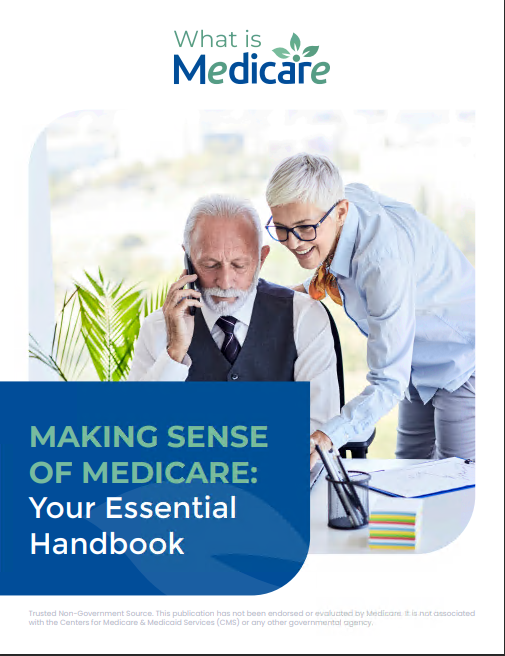Key Takeaways:
-
Managing out-of-pocket costs in Medicare Part D requires understanding plan structures, annual limits, and the 2025 changes that impact prescription drug expenses.
-
Knowing how to use cost-saving strategies, like formulary checks, preferred pharmacies, and generic alternatives, can help you keep costs manageable throughout the year.
Understanding Medicare Part D Costs in 2025
Medicare Part D helps cover prescription drug costs, but it’s not always straightforward. Even with coverage, you may face unexpected out-of-pocket expenses, including deductibles, copayments, and coinsurance. With the 2025 introduction of a $2,000 annual out-of-pocket cap, managing these costs becomes more predictable, but you still need to plan wisely.
1. Know Your Medicare Part D Cost Phases
Medicare Part D consists of different cost phases, each affecting how much you pay out of pocket. Understanding these phases helps you anticipate expenses throughout the year.
The 2025 Medicare Part D Coverage Phases
-
Deductible Phase: You pay 100% of prescription drug costs until you reach the deductible, which can be as high as $590 in 2025.
-
Initial Coverage Phase: Your plan starts covering a portion of your medication costs, but you still pay copayments or coinsurance. This lasts until your total drug spending reaches a certain threshold.
-
Catastrophic Coverage Phase (Updated for 2025): Once you reach the new $2,000 out-of-pocket cap, you won’t pay anything for covered prescriptions for the rest of the year.
2. Compare Plans and Check Formularies
Every Medicare Part D plan has a different formulary, which is the list of covered drugs. Selecting the right plan for your medication needs can prevent surprise costs.
Steps to Reduce Prescription Costs by Choosing the Right Plan
-
Review the plan’s formulary annually: Formularies can change every year, meaning a drug covered in 2024 may have a different cost or coverage in 2025.
-
Check for preferred pharmacies: Many plans have preferred pharmacy networks that offer lower costs. Using an out-of-network pharmacy can result in higher copays.
-
Look for tiered pricing: Plans categorize drugs into tiers, with lower-tier drugs costing less. Choosing a lower-tier alternative may save money.
3. Use Cost-Saving Strategies for Prescription Drugs
Even with coverage, prescription drug costs can add up. Consider the following methods to reduce expenses.
Ways to Cut Prescription Costs
-
Ask your doctor about generic alternatives: Generics often cost significantly less than brand-name drugs and work just as effectively.
-
Use mail-order services: Some Medicare Part D plans offer mail-order pharmacies, which provide a 90-day supply at a lower cost.
-
Apply for assistance programs: Programs like Extra Help can significantly reduce out-of-pocket costs for eligible beneficiaries.
4. Monitor Your Drug Spending Throughout the Year
Keeping track of your medication expenses can help you avoid unexpected costs.
How to Stay on Top of Prescription Costs
-
Review your Explanation of Benefits (EOB) statements: Your plan sends these statements detailing what has been paid and how much you owe.
-
Know your out-of-pocket cap: In 2025, once you spend $2,000 on covered prescriptions, you won’t have to pay anything further for those medications for the rest of the year.
-
Avoid unnecessary refills: Make sure your prescriptions align with your actual needs to prevent extra spending.
5. Be Prepared for Annual Medicare Changes
Medicare updates its rules and cost structures every year, and 2025 brings significant changes, including the elimination of the coverage gap (donut hole). Staying informed ensures you get the best value from your plan.
What You Need to Know for 2025
-
No more catastrophic coverage cost-sharing: Once you hit the $2,000 limit, your plan covers the full cost.
-
Medicare Prescription Payment Plan: This new program allows you to spread drug costs over monthly payments instead of paying large sums upfront.
-
Plan costs and formularies change yearly: Make sure to review your Annual Notice of Change (ANOC) to see if your costs will change.
Planning Ahead for Your Prescription Costs
Understanding Medicare Part D cost structures and utilizing cost-saving strategies can help you avoid unexpected expenses. Take the time to compare plans, track your spending, and use available programs to keep your medication costs manageable.
Need personalized assistance? Speak with a licensed agent listed on this website to explore your Medicare Part D options and ensure you’re making the best choice for your healthcare needs.










